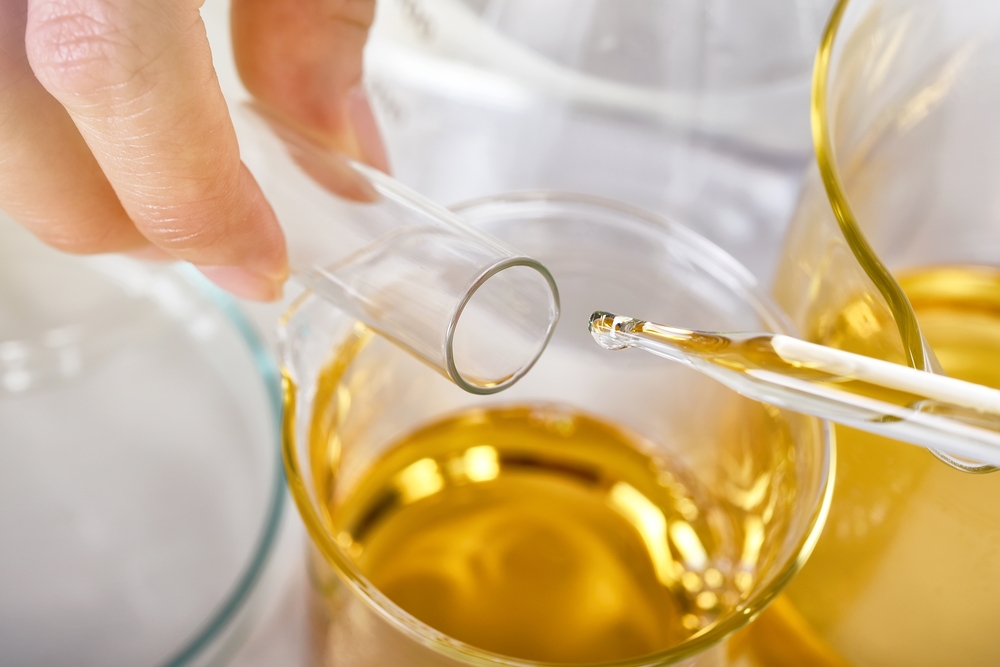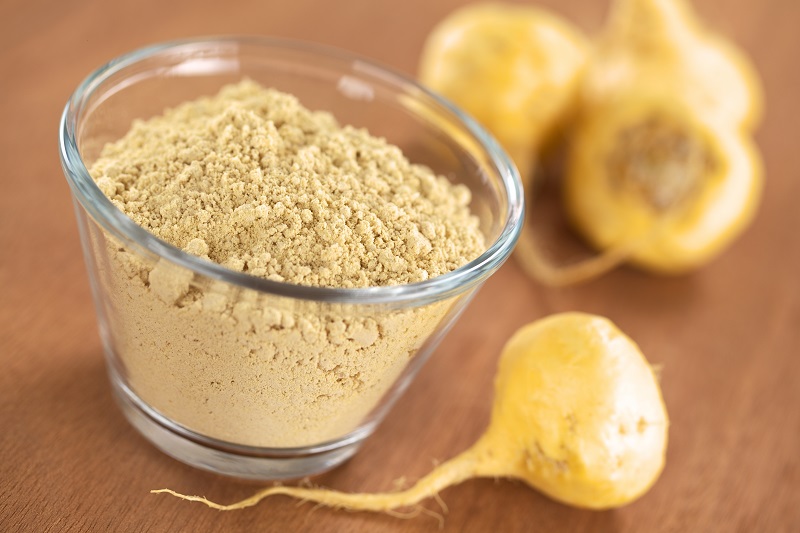Whether you’re looking to launch a liquid supplement product line for the first time or you’re a brand looking to switch manufacturers, you might be curious about how product formulation works. Sure, you see the finished result at the end of the process, but what does it take to get there?
Today, we’re going to break down each aspect of the process surrounding supplement product formulation. Let’s first start with ingredient selection.
Phase 1: The Ingredients Selection
At the heart of any potent liquid supplement is the roster of ingredients that it comprises. The journey begins with meticulous selection, driven by factors like efficacy, quality, and compatibility.
While a majority of liquid supplements harbor natural ingredients, such as herbs, vitamins, or minerals, the challenge lies in ensuring these ingredients remain stable and effective in the liquid medium. The formulators apply their knowledge of ingredient interactions and will often iterate multiple proportions of ingredients before deciding on the formula that they want to present to you.
Sourcing is another pivotal aspect. Manufacturers often prioritize ingredients sourced sustainably and ethically. There’s a growing emphasis on non-GMO, organic, and allergen-free components, catering to an audience that’s increasingly conscious about what they consume. Don’t forget to ask a contract manufacturer if they are able to adhere to any specific dietary or allergen restrictions that you want for your product line.
When you’re considering different manufacturers, be sure to ask them about their certifications. These are third-party attestments to their quality and capabilities. You’ll learn a great deal about what they can make, and how it can comply with your vision for your product line.
Phase 2: The Formulation Process
Once the ingredients are decided upon, the formulation process commences. This is a delicate balancing act, ensuring the supplement is not just potent but also palatable. It involves various stages:
- Stabilization: Here, experts work to ensure that the selected ingredients remain stable in a liquid form. This involves adjusting the pH, using stabilizers, or sometimes, microencapsulating certain ingredients to prevent them from interacting or breaking down.
- Flavor and Color Optimization: Liquid supplements must be appealing to the palate. Thus, natural flavors and colors are added. This step also ensures that the final product is consistent in terms of taste and appearance, batch after batch.
- Testing: Arguably one of the most critical phases, testing ensures the liquid supplement’s safety and efficacy. Laboratories subject the product to multiple tests, determining its shelf life, consistency, and ensuring it is free from contaminants.
Each manufacturer may include additional steps, or they may have practices that differ slightly. This is meant to be a general overview of what is included broadly in most formulation processes.
Phase 3: Packaging and Preservation
The efficacy of a liquid supplement isn’t just reliant on its formulation but also its packaging. The right kind of packaging ensures that the supplement remains uncontaminated, retains its potency, and has an extended shelf life. Glass and certain types of plastic bottles are commonly used, equipped with tamper-evident seals for added security.
Preservation is another cornerstone. Since liquid supplements can be more vulnerable to microbial contamination, natural preservatives are added to ensure longevity and safety for the consumer.
Phase 4: Quality Control and Assurance
A reputable private-label supplement manufacturer is nothing without their quality control processes. One cannot emphasize enough the central role played by an unwavering commitment to quality control and assurance for both brand credibility and consumer protection.
Some typical duties involved in the quality control process might include:
Analyzing Physical Attributes
Every batch of liquid supplement undergoes a systematic examination where its physical attributes, such as viscosity and color, are assessed rigorously. The viscosity is a critical parameter as it can affect both the texture and the stability of the supplement. Sophisticated tools are employed to measure viscosity precisely, to ensure a uniform and pleasant consistency, crucial for consumer acceptance.
Color, on the other hand, is more than just about the visual appeal; it can be an indicator of the product’s stability and its adherence to the formulated specifications. The color analysis ensures that each batch maintains a consistent hue, avoiding any undesirable changes that might signal issues with the formulation.
Microbial and Chemical Analyses
Moving deeper, the formulations are subjected to meticulous scrutiny where experts test for microbial content. This is a vital step, ensuring products are free from contaminants that could potentially pose health risks.
Techniques like Gas Chromatography and High-Performance Liquid Chromatography (HPLC) are routinely employed to isolate and identify any microbial entities present, guaranteeing a product that is safe for consumption.
Equally important is the assessment of the product’s potency. A product’s efficacy is inherently tied to the concentration and bioavailability of its active ingredients. Therefore, it is incumbent upon manufacturers to verify that every batch maintains the desired potency, delivering on its promises and sustaining consumer trust.
pH Level Adjustments
Another intricate facet of quality control is monitoring the pH levels in the formulations. Maintaining the correct pH is not only critical to ensuring the product’s stability but also can have implications on its shelf life. Moreover, the pH level can influence the solubility and therefore the bioavailability of certain vital ingredients, making it a critical parameter to control.
Regulatory Adherence and Documentation
Beyond the laboratory analyses, quality control extends to adherence to regulatory guidelines that govern supplement manufacturing. This includes maintaining Good Manufacturing Practices (GMP) and adhering to the norms stipulated by regulatory bodies such as the FDA in the United States. Equally crucial is the comprehensive documentation of all processes and analyses, creating a transparent trail that attests to the product’s compliance with all necessary guidelines.
Collaborative Feedback Loops
Lastly, it is worth noting that quality control is not a static process but a dynamic one, characterized by continuous feedback loops. Insights garnered from one batch can inform adjustments in the formulation or process parameters for subsequent batches in a continual pursuit of perfection.
What About Replication Formulations?
When a supplement brand already possesses a formula they are satisfied with but wishes to switch to a new manufacturer, the product formulation replication process involves several stages. This process is aimed at ensuring that the new manufacturer can produce a product that is consistent in quality, efficacy, and safety, matching the original formula as closely as possible.
Here’s a breakdown of what this process typically looks like:
- Disclosure and review of the existing formula: Share the existing formula with the new manufacturer as well as detailed information about active ingredients, inactive ingredients, and exact quantities and concentrations. You can also share previously used manufacturing processes and methodologies.
- Material sourcing: Sourcing all the required ingredients and identifying suppliers for specially sourced or proprietary ingredients.
- Sample production: Sample batches of the replica formula are created to ensure that the formula has been interpreted correctly and faithfully.
- Analytical testing: On a visual, soluble, and textural level, does the product resemble the previous formula? Are the ingredient purity and concentration accurate? Is the formula stable to retain efficacy over time? These questions and more are explored.
- Sensory evaluation: The taste, smell, and overall aesthetic appearance of the product are all evaluated to ensure that they remain consistent despite switching manufacturers.
- Feedback and adjustments: The brand offers feedback to the manufacturer in the event that any adjustments need to be made.
- Pilot batch: Once an approved formula is decided, a pilot batch is made. This is to verify consistency and quality at a higher scale than the earlier samples.
- Final testing and approval: Before going live with the replicated formula, it will go through multiple rounds of final testing and approval.
Get Better Product Formulation for Your Liquid Supplements
At Yellow Emperor, we are proud to serve the supplement industry as the trusted private-label manufacturer for countless bestselling liquid supplement products on the market today. Whether you’re looking to launch a new line or are looking to partner with a new manufacturing solution, we’re here to help. Get started by requesting a quote today.







